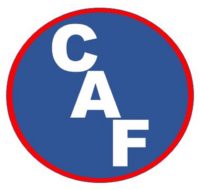Now that you are ready to play with the CAF system, lets discuss ways a system can be destoyed and the simple methods to avoid this occurance.
As previously discussed in the CAF Basics, a CAF system is basically three systems combined to mix foam – W (Water Pump) + Conc (Proportioner Pump) (=Solution) + Air (Compressor System) + A (Agitation – not a system, this happens in the hose). In order to prevent destroying the system, we simply need to understand how it works and how to monitor the signs.
PUMP – Fire pumps can be damaged by cavitation – however, we do not cover fire pumps on this site.
PROPORTIONERS – Foam proportioners can be rendered useless by not operating the pump on a regular basis. Foam concentrate can dry out and harden inside the pump making it impossible to pump any concentrate. Some proportioners require a maintained oil level, while others require perioding lubrication. Failure to provide the appropriate lubrication can cause the pump to seize. Follow the manufacturer’s instruction for maintaining and operating the proportioner.
COMPRESSORS – The big expensive damage comes from the loss of the compressor. The two ways to destroy the compressor are to seize it up, or burn it up. Note: Both can occur in under a minute
Compressor Seize – Two things can cause a compressor to seize – 1) low or no hydraulic oil. The compressor must have hydraulic oil to turn. A simple check of the oil level (most systems have a sight glass) prior to and during operation insures that oil is available. 2) Water in the hydraulic system. Compressors do not spin with water, only hydraulic oil. Water in the system can also be detected by checking the oil sight glass prior to and during long term operations of the system. If the oil level on the sight glass drops (losing oil) or increases (water is filling the system), it indicates a problem and the system needs to be shut down and immediately checked for cause. Failure to monitor the sight glass before and during prolonged operations can lead to destructive damage.
In addition to the sight glass, many CAF systems are equipped with hydraulic oil monitoring sensors (temperature gages and overheat alarms). Compression of air (similar to filling an SCBA) results in the production of heat. During CAF operations, the hydraulic oil heats up along with the air. The warm air is cooled when it mixes with the water/concentrate solution as it heads down the hose line. The hydraulic oil is cooled by a heat exchanger that circulates water from the fire pump, through the heat exchanger, removing the heat from the hydraulic oil, and then sending the warmer water back to the apparatus water tank to cool. It is critical to monitor the CAF temperature gage to insure the system is staying cool.
If the hydraulic oil is low, the oil will flow through the system too often and even though the water may be circulating back to the water tank, the hydraulic oil may not be able to cool off fast enough.
Sump Fire – Fire is a combination of Fuel, Heat and Oxygen (normal air). Think about the compressor system. It is a closed container full of combustible hydraulic oil (Fuel), Compressing Air (Heat from Compression + Air from the atmosphere). If the hydraulic oil gets hot enough and cannot be cooled fast enough, it is possible to reach the hydraulic oil’s combustion temperature and ignition can occur. If this happens, the resulting fire is fast and furious and destroys the CAF system in seconds. Often times there is no outword visual evidence of a fire. But the entire system will seize. Since the Sump is the hydraulic storage tank, and the sump, oil lines, compressor and other components burn internally, it is usually refered to as a sump fire. A Sump Fire has 1 cause – failure to keep the hydraulic oil cool. This happens quite regularly if there is no water in the water tank to aid in cooling down the oil, or a blocked water circulation line. If the water tank is depleted during a fire fight, immediately monitor the hydrailic oil temperature gage and shut down as appropriate. A blocked water line can be cleared by cleaning the line’s dirt catching cleanout device (frequently a wye cleanout). Depending on the system, the apparatus may have to be shut down to check and/or clean out the line.
A sump fire occurs when there is Fuel, Heat and O2. No oil in the system may cause an increase in the temperature gage and will ultimately cause the compressor to seize, but if there is no oil, there is no fuel for a fire. The compressor will generally seize prior to temperatures getting too hot.

Water in the system will ultimately cause the compressor to seize. However, water in the system wil not cause the temperature gage to register hot.

In either case, a seized compressor is destroyed as is a burned compressor. They cannot be repaired and must be replaced (Big $$$).
So, it’s simple to avoid these calamties. Check the system prior to operation (regular system checks as outlined in the department and manufacurer’s guildlines) and monitor both the site gage and temperature gage during operations. And of course, react if something seems amiss. Do not ignore the temperature gage, sight glass level or alarms. It is the same in any fire pump or engine failure, notify affected firefighters to move to safety and shut down the system as necessary.
Simple monitoring can lead to decades of successful system operations.





























